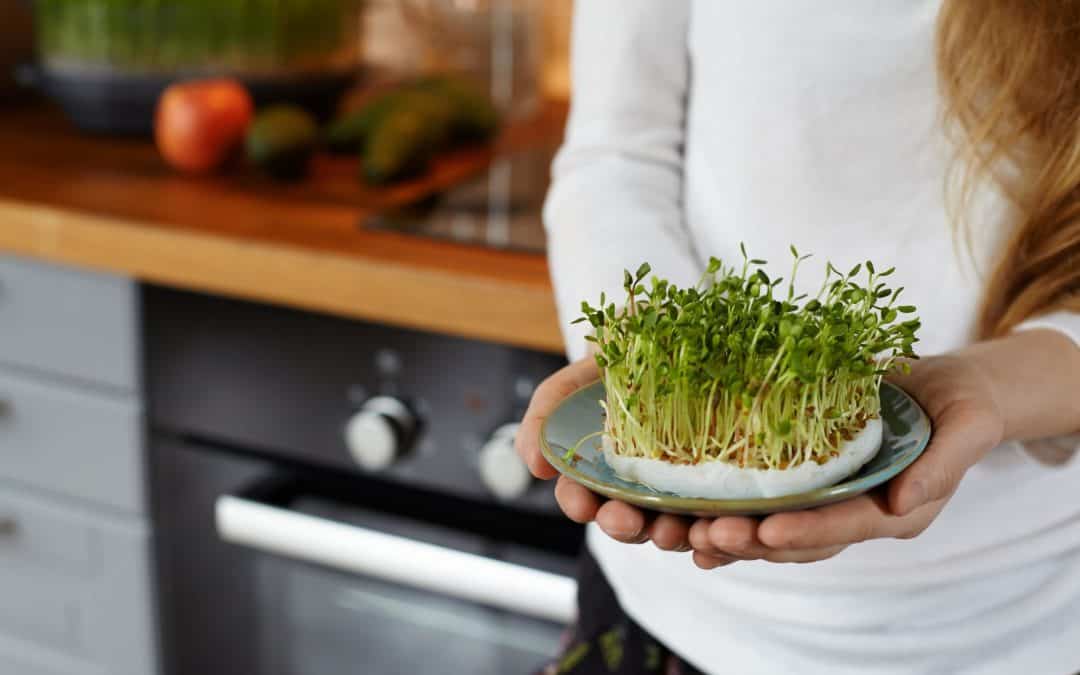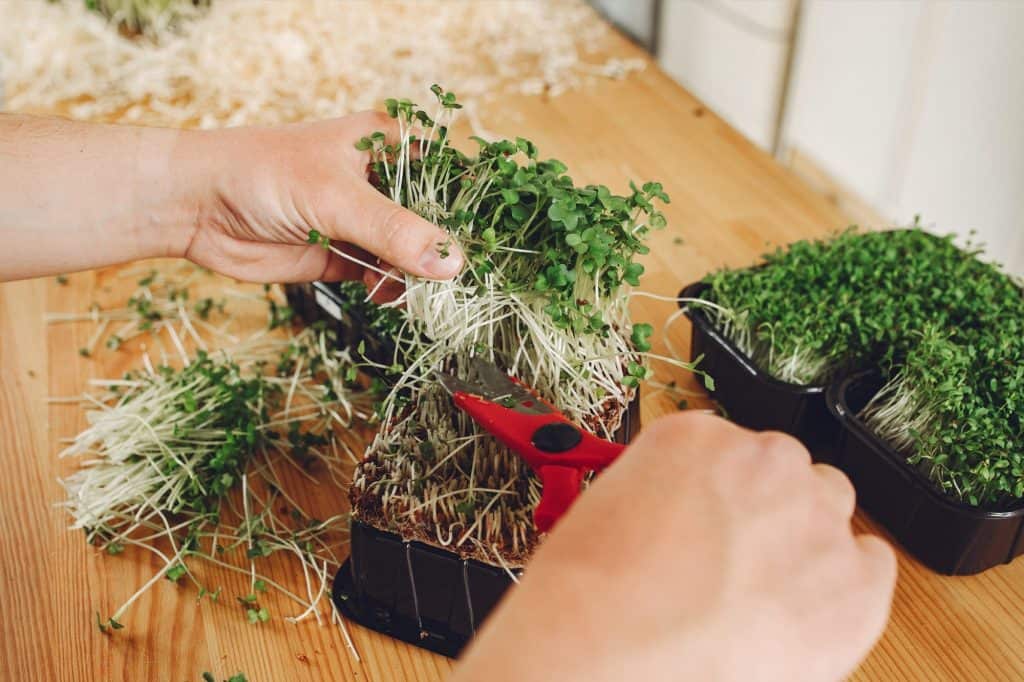Microgreens are the next big thing in the world of food. They come from sprouting seeds before they reach maturity, so they’re bursting with all sorts of nutrients that you can’t get from plants that have been grown to full size. This article will explore what they are, how to grow them at home, and why you should eat more of them.
What are Microgreens?
A microgreen is a young edible plant. They’re harvested in their early stages when the first two sets of true leaves have developed, and the plant is only about a week to three weeks old. The size can vary greatly depending on the type of plant that they come from.
They range in height from 1/16 inch to 6 inches tall. Although the most common type is grown from seeds, they are harvested from young plants and can be purchased at your local farmers’ market. They can be produced from a wide range of different plant seeds. They come in a variety of textures and colors, and each has its unique flavor.
One of the best things about them is that they’re easy to grow. You purchase seed pods online or at your local garden center, and there are even kits available with everything you need to start growing your microgreens. Here’s a list of seeds commonly used as microgreens, but feel free to experiment with any edible seeds.
Beet Greens: These greens have a slightly sweet and spicy flavor, making them great for salads or garnishing scoops of ice cream!
Here are Some Choices to Grow:
Kale: The best choice for colder weather, kale reaches its full size after about 12 days of growing. It’s best sauteed and seasoned with garlic, salt, and pepper.
Cress: There are several different types of cress, but the most common is watercress which tastes like a peppery version of arugula.
Arugula: A staple in Italian cuisine, arugula has a spicy and robust flavor that pairs well with cheese dishes like pesto.
Microgreen Benefits
Microgreens are nutrient-packed powerhouses, which is why you should add them to your daily diet. They’re full of antioxidants that protect the body from damages like strokes and cancer. They also contain high amounts of vitamin c, which can help boost your immune system and keep your skin healthy. They also have high levels of vitamin e, which is good for the body’s muscles and bones and helps lower cholesterol levels.
What’s more, they are packed with calcium that aids in healthy bone development. They can even help you maintain a healthy weight because they contain appetite-suppressing compounds. Another microgreen benefit is that they also have properties that can aid in digestion and prevent constipation.
How to Grow
Growing these plants is easy, fun, and doesn’t take up much space. Here are some instructions on how to grow microgreens:
Step 1: Find the most suitable place to grow your seeds. They thrive in the sun, so pick a south-facing window if possible. If this is not available, a west-facing window will work as well. In the fall and winter, you can use a grow light to ensure your plants get enough sunlight.
Step 2: Find a container with drainage holes in the bottom to grow them in.
Step 3: Fill the pot with 1/4 inch of planting medium, such as vermiculite, peat moss, or perlite. Mix this with your potting soil.
Step 4: Sprinkle a small number of seeds onto the surface of the planting medium and cover them with a skinny layer of more planting medium. It would be best if you only spaced out the seeds about 1/4 inch apart from each other.
Step 5: Place your covered seeds under bright light. Place the pot in a sunny window, place a grow lamp over it, or use fluorescent lights to help your seedlings grow.
Step 6: Spray the top layer of the planting medium with water until it is damp but not soaking wet. You don’t want any standing water in the bottom of your pots.
Step 7: Repeat watering every two to four days, depending on the type of growing medium you use. You will want to keep your soil moist but not soggy.
Step 8: Your plants are ready to harvest in about 10-14 days! Cut them off at the base with a pair of scissors when they’re tall enough to eat. You can also add them to salads and sandwiches or garnish your favorite dishes with them.
In Conclusion
Microgreens are baby plants harvested before they reach maturity. They’re typically grown in hydroponic gardens or other controlled environments, leading to less nutrient loss and better flavor than full-grown vegetables. You can grow them at home because the process is easy.
Sources:
https://www.healthline.com/nutrition/microgreens
https://www.gardeners.com/how-to/grow-microgreens/7987.html
© 2016-2021 by DietFind.com, a LIVenture LLC.
All rights reserved. No part of this document may be reproduced or transmitted in any form or by any means,
electronic, mechanical, photocopying, recording, or otherwise, without prior written permission of LIVentures LLC.


